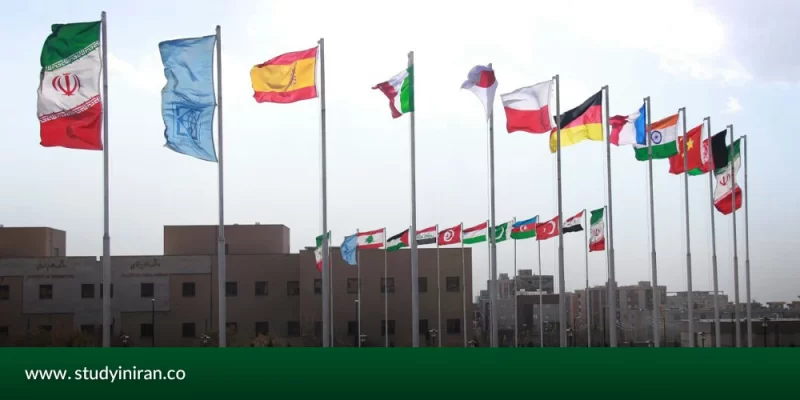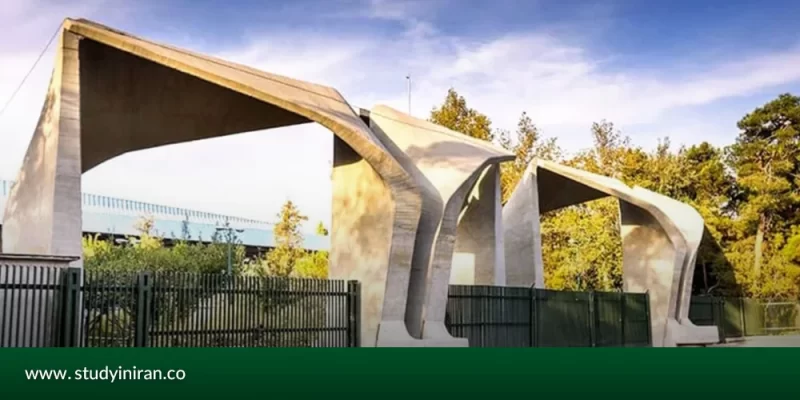- Advantages of Pursuing a Master’s Degree in Iran
- Steps for Master’s (MA) Admission in Iran
- Costs of Master’s Studies in Iran
- Top Master’s Universities in Iran
- Admission Requirements for Master’s Degree in Iran
- Required Documents for Master’s Admission in Iran
- Jobs opportunities for graduate students in Iran
- Final Words
- Frequently Asked Questions
Master’s degree in Iran offer international students a valuable opportunity to deepen their specialized knowledge in a dynamic academic environment rich in culture. Iranian universities, with distinguished faculty members, advanced research facilities, and diverse graduate programs, provide a solid foundation for academic, research, and professional growth. Affordable tuition fees, along with available scholarships, make Iran an attractive destination for those seeking quality and accessible education. This degree not only leads to advanced knowledge but also provides a chance to gain a deeper understanding of Iranian culture, language, and society.
Advantages of Pursuing a Master’s Degree in Iran

Rich Cultural Heritage:
Iran, with its several-thousand-year history, is one of the world’s oldest civilizations. Studying for a master’s degree in Iran allows students not only to learn in an academic environment but also to become familiar with the deep culture, art, philosophy, and history of this land.
Reputable Universities:
Iran hosts universities with high academic and research reputations, many of which hold strong positions in regional and international rankings. These universities, with distinguished faculty and well-equipped educational facilities, provide a suitable environment for academic and professional growth.
Opportunity to Learn Persian Language:
Studying in Iran offers a unique chance to learn Persian. Familiarity with the language is useful not only for everyday communication but also for gaining a deeper understanding of literature, culture, and native resources.
Diversity of Fields and Specializations:
Iranian universities offer a wide range of master’s programs across humanities, engineering and technical sciences, basic sciences, arts, medicine, and agriculture. This variety allows international students to choose a field that matches their interests and goals.
Affordable Costs:
Tuition fees and living expenses in Iran are generally lower compared to many other countries. This makes Iran an attractive option for students seeking quality education alongside economic savings.
International Environment:
Every year, students from various countries come to Iran, creating a diverse and multicultural atmosphere at universities. This experience enhances communication skills and promotes cross-cultural understanding among students.
Research and Fieldwork Opportunities:
Due to Iran’s unique geographical location and rich historical background, students in fields such as archaeology, sociology, history, and environmental studies can participate in field research projects and practical studies.
Academic and Professional Networking:
Master’s students in Iran have the chance to connect with professors, researchers, and specialists, participate in conferences, joint projects, and scientific activities. These interactions can lead to long-term professional collaborations.
Better Understanding of Regional and Global Issues:
Being in a country that plays a significant role in Middle Eastern political, cultural, and economic developments provides students with new perspectives on international and regional matters, deepening their understanding of contemporary challenges.
Personal and Cultural Development:
Living in a new country with a different language, customs, and educational system promotes personal growth, cultural adaptation, and independent life skills. This experience is educational as well as formative and identity-building.
Steps for Master’s (MA) Admission in Iran
Official announcements
Iranian universities usually announce the start of the master’s admission process on their official websites, reputable newspapers, or local media, typically a few months before the academic year begins.
Application submission
Interested international students must download application forms from the university website during the specified period, complete them, and send them with required documents to the admissions office. Deadlines and required documents are detailed in the announcements.
Academic requirements
Applicants need a relevant bachelor’s degree from a recognized university. Sometimes a minimum GPA is required for admission.
Language proficiency
If the program is taught in Persian and the applicant is not a native speaker, they must prove language skills through a test or official certificate. Some universities offer Persian language courses before starting the program.
Entrance exam or interview
Some universities hold written exams or interviews to assess applicants’ knowledge, usually focused on the specific field of study.
Selection and final admission
Universities review academic records, exam scores (if any), and other criteria to select qualified candidates. Final admission is based on academic merit.
Admission letter and registration
Accepted students receive an official admission letter, which they must confirm and use to complete final registration and apply for a student visa on time.

Costs of Master’s Studies in Iran
Tuition fees for master’s programs for international students in Iran typically range from about $1,500 to $4,000 per year.
Estimated annual expenses for master’s studies in Iran (in USA):
- Tuition: $1,500 to $4,000
- Accommodation: $1,200 to $2,500
- Food: $1,000 to $1,800
- Transportation: $300 to $600
- Books and study materials: $100 to $300
- Health insurance: $150 to $400
- Miscellaneous expenses: $300 to $600
Total approximate annual cost: $4,550 to $10,200
Keep in mind that you can apply for Iranian scholarships to reduce these costs. These scholarships are offered by the government or private organizations, each with its own specific conditions.
Top Master’s Universities in Iran
1. University of Tehran
- Key Fields: Persian Literature, Archaeology, Sociology
- World Ranking: 581–590
2. Sharif University of Technology
- Key Fields: Art History, Philosophy, Political Science
- World Ranking: 651–700
3. Allameh Tabatabayi University
- Key Fields: English Literature, Islamic Studies, History
- World Ranking: 801–1000
4. Ferdowsi University of Mashhad
- Key Fields: Linguistics, Persian Language, International Relations
- World Ranking: 801–1000
5. Shahid Beheshti University
- Key Fields: Psychology, Communication Studies, Islamic History
- World Ranking: 801–1000
6. University of Isfahan
- Key Fields: History, Educational Sciences, Archaeology
- World Ranking: 1001+
7. Kashan University
- Key Fields: Art Studies, Architecture, Urban Planning
- World Ranking: 1001+
8. University of Mazandaran
- Key Fields: English Language Teaching, Translation Studies, Archaeology
- World Ranking: 1001+
9. University of Gillan
- Key Fields: Social Work, Linguistics, Geography
- World Ranking: 1001+
10. Kharazmi University
- Key Fields: Sociology, Art History and Archaeology, International Relations
- World Ranking: 1001+
Admission Requirements for Master’s Degree in Iran
To study for a Master’s degree and obtain a student visa for Iran, you must meet the following conditions:
- Bachelor’s Degree: The applicant must hold a valid Bachelor’s degree from a recognized university, related to the desired Master’s field. For example, to study Literature, the Bachelor’s should be in Literature or a related discipline.
- Academic Performance: Some universities set a minimum GPA or academic average for admission to Master’s programs.
- Language Proficiency: If the program is taught in Persian, you must prove proficiency in Persian. For international students, if the program is in English, universities may accept IELTS or TOEFL scores.
- Entrance Exam (if required): Some universities require an entrance exam or interview to assess the applicant’s knowledge and skills in the chosen field.
- Recommendation Letters: Certain programs may request recommendation letters from professors or professional referees confirming the applicant’s abilities and potential.
- Statement of Purpose: You may need to submit a motivation letter explaining your reasons for pursuing the degree, your academic and career goals, and how the program aligns with them.
- Work Experience (optional): Some programs value relevant work experience as a plus, but it’s not always mandatory.
- Portfolio (if applicable): For fields like art or design, you might need to provide a portfolio of previous work for evaluation.

Required Documents for Master’s Admission in Iran
1. Completed application form: University form with personal and academic information.
2. Bachelor’s degree: Copy of Bachelor’s diploma or certificate of completion (or in progress) in a related field.
3. Transcripts: Official transcripts showing grades and academic performance during Bachelor’s.
4. Resume (CV): Detailed document of academic, research, and professional experiences including projects and related publications.
5. Language test scores: Valid scores such as IELTS or TOEFL if the program is in English, or other relevant language tests.
6. Entrance exam or interview (if applicable): Some universities hold exams or interviews to assess expertise.
7. Recommendation letters: Two or three letters from professors or professional referees confirming your skills and potential.
8. Statement of Purpose (SOP): A letter explaining your motivation, academic and career goals, and how the program aligns with your aspirations.
9. Copy of valid passport: For identification and administrative purposes.
10. Passport-sized photos: Recent, standard photos for identification documents.
Jobs opportunities for graduate students in Iran
- Teaching and Education: Graduates in education, language teaching, or educational management can work in schools, language institutes, and training centers. Salaries typically range from $5,000 to $10,000 per year.
- Research and Academia: Humanities, social sciences, and arts graduates may work as research assistants, university researchers, or lecturers. Salaries generally range from $6,000 to $12,000 annually.
- Journalism and Media: Graduates in communications, journalism, and media studies can find jobs in newspapers, radio, TV, or other media outlets. Average salaries range from $5,000 to $10,000 per year.
- Public Administration: Graduates in political science, international relations, or public management may work in government offices, embassies, or international organizations. Salaries range from $5,000 to $12,000 annually.
- Cultural Heritage and Tourism: Graduates with degrees in archaeology, cultural heritage, or tourism management can work in museums, heritage protection agencies, or the tourism industry. Salaries usually range from $5,000 to $10,000 per year.
- Nonprofit Sector and NGOs: Graduates interested in social work and development may work in NGOs or nonprofit organizations. Salaries vary but typically fall between $5,000 and $10,000 per year.
- Business Sector and Companies: Some graduates find opportunities in marketing, communications, and public relations in companies. Salaries vary widely depending on the company and position.
Final Words
Studying for a master’s degree in Iran offers international students an opportunity to deepen their specialized knowledge in a dynamic, academic, and affordable environment. Iranian universities provide diverse programs, distinguished faculty, and solid research infrastructure, creating a serious setting for academic growth. If you’re aiming to pursue graduate studies in a country with a strong scholarly tradition, Study in Iran is a reliable guide to help you explore programs, admission requirements, and scholarship opportunities.
Frequently Asked Questions
Applicants must submit a bachelor’s degree, official transcripts, completed application form, CV, recommendation letters, statement of purpose, identification documents, passport-sized photos, and if needed, language test scores or portfolio (for art-related fields).
Yes, if the program is taught in Persian. International applicants must prove Persian language skills. Some programs offered in English accept IELTS or TOEFL scores.
No, not all universities hold entrance exams. Some admit students based on academic records, CV, and supporting documents, while others conduct interviews or exams.
Annual tuition for international students typically ranges from $1,500 to $4,000. Additional costs like accommodation, food, and insurance raise total annual expenses to roughly $4,500–$10,200.
Yes. Scholarships include government, university, international, cultural exchange, and sometimes private or corporate funding. Some universities also offer teaching or research assistantships.
Generally, it takes two years, including theoretical courses, research, and usually a thesis.
Yes, but under certain conditions. Some universities provide opportunities like teaching or research assistantships. Official work permits outside university may be limited.
Graduates can work in teaching, research, media, public administration, cultural heritage, NGOs, or private companies. Salaries typically range between $5,000 and $12,000 annually, depending on the field.
Usually no strict age limit, though some universities may set age conditions for scholarships or specific programs.
Yes. Many Iranian universities offer PhD programs, and master’s graduates can apply if they meet the requirements.






I’m interested for scholarship free in Iran 2025-2026 I want to study civil engineering for bachelor
Hello. You can use WhatsApp to contact the institute. The contact numbers are listed in the Contact Us section.